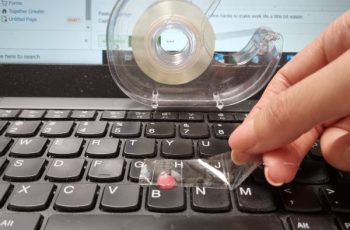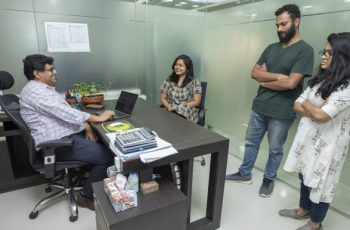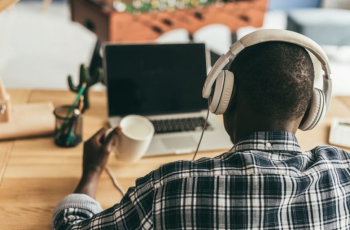2. Switch on the light in the morning.
The light, whether natural or artificial, tells the brain the day has started and signals the body to stop production of melatonin.
“For productivity, bright lights with cool tones or daytime lighting help signal your body to alertness and focus,” explains Robert Soler. He is the co-founder and former NASA advisor on circadian light. He compares it to how you might feel more productive and happier on a sunny day than if the sky is overcast.

3. Invest in Circadian Lighting
Soler says that harsh fluorescent bulbs may negatively affect your performance at work. He recommends investing in circadian lighting, which mimics the sky and sun. You want to find a gradient with different light temperatures and the blue reflection from the sky.
He cites a study from 2022, published in PLOS biology, that shows such lighting has “beneficial effects” on the self-reported alertness and performance of daytime office workers, as well as improved mood, cognitive performance, and higher-order decisions. The study also revealed improved “measures” of reading comprehension and concentration in students.

4. Start the day off with a cold bath.
You can be more alert and ready for the tasks you have ahead by taking a cold shower. Alex Trevatt MD, clinical lead for Avon Aesthetics who also runs Medistudents medical education company, told Best Life that cold water exposure releases endorphins which are natural mood enhancers and painkillers.
A cold shower can also improve circulation, increase attention and strengthen the immune system.

5. Use the Pomodoro Technique
You’ll want learn more about the Pomodoro Technique now, because the majority of experts we spoke to recommended it as a way to improve productivity.
In the 1980s, Francesco Cirillo created this technique for time management. He was inspired by popular kitchen timers in the shape of tomatoes.
The steps are: step one, work like your life is on the line for 25 minutes. Step two, kick back and relax for 5 minutes. Repeat this four times. Finally, chill out for 15 minutes.
This technique is designed to “prevent burnout and fatigue” according to Andrei Vasilescu CEO and founder at DontPayFull.com. It’s particularly useful for complex or tedious tasks that require concentration or creativity.

6. Implement the Eisenhower Matrix.
The Eisenhower Matrix is another popular technique that experts use. It’s also called the Urgent-Important Matrix. The Eisenhower Matrix divides tasks into 4 categories: Urgent, Important, Not urgent but Important, Urgent, but Not Important and Not Urgent, but Not Important.
Karina Kokova is the chief communications officer for My.GAMES and describes it as “a simple but powerful tool which can help you to make better decisions on how to spend your time, and achieve your goals in a more efficient manner.” She says that the Eisenhower Matrix can be useful for both personal and work tasks.

7. Follow the two-minute rule.
The Two-Minute Rule is a productivity mantra that many swear by. The rule states that you should complete a task immediately if it takes less than 2 minutes. This is the best way to stop procrastinating.
Juliet Dreamhunter is a certified goal-success coach and the founder of Juliety. She says that she likes stepping it up and setting a 30 minute timer to see how many tasks under two minutes she can accomplish within a half-hour.





